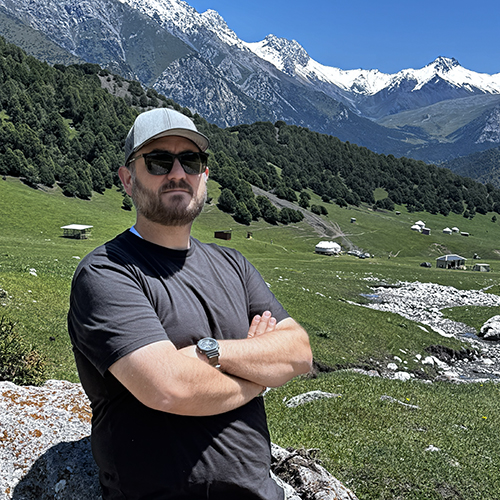Fifty years ago, George Wallerstein piloted a Cessna plane from Berkeley to Seattle to interview for a faculty position in the UW’s brand new Department of Astronomy. He’d just completed instrument training on the Cessna and was eager to practice his new skills.

The Cessna’s battery died mid-flight, but Wallerstein landed safely—and was soon hired as chair of the nascent Astronomy Department. Since then the department has become a research powerhouse, involved in many of the largest and most promising astronomy projects nationally and internationally. Some of that research will be featured in a fall lecture series, one of several upcoming events that celebrate Astronomy’s golden anniversary.
Soon after joining the UW faculty, Wallerstein shepherded the building of a new observatory on Manastash Ridge in eastern Washington that is still used by undergraduates today. The observatory was not the UW’s first; that distinction goes to the Jacobsen Observatory, built on the Seattle campus in 1895 and later named in honor of Theodor Jacobsen, the UW’s sole astronomy professor (based in the Mathematics Department) from 1928 to 1965.
In 1995 the Astronomy Department was well-established and able to partner with four other universities to complete a much more powerful telescope at Apache Point in New Mexico. Other partnerships followed, making the UW a key player in the Sloan Digital Sky Survey Telescope and the upcoming Large Synoptic Survey Telescope. Faculty also have had a hand in many other major national projects in astrophysics including the Hubble Space Telescope, orbiting x-ray telescopes, and huge ground-based telescopes in Hawaii, Chile, and Spain.

“With technological advances, opportunities have just exploded in astronomy,” says Bruce Balick, professor emeritus of astronomy, “and we’ve caught each wave as quickly as we can.”
Department chair Scott Anderson explains that current astronomy research at the UW falls mainly into four general categories: survey astronomy, which uses massive cameras to map the sky and identify changes over time; space-based astronomy, which uses telescopes above the Earth’s atmosphere to capture detailed images of celestial objects and study wavelengths of light that don’t reach Earth; astrobiology, an interdisciplinary field that looks at the potential for life elsewhere in the Universe and includes the study of exoplanets orbiting around other stars; and computational and theoretical astrophysics, which often employ powerful computers to model and test theories.

“Many of our faculty are observers who use telescopes and analyze data from telescopes,” says Anderson, “but the theoreticians who focus primarily on the underlying physics and mathematics are equally important.”
George Wallerstein, now a professor emeritus but still active in the department, remains firmly on the observation side of astronomy. In fact, there’s one star he has been monitoring since 1957, convinced it will soon become a supernova, or exploding star.
“Each of us has our favorite that we think will blow up within our lifetime, though it’s not likely,” says Wallerstein, who explains that exploding stars are a bonanza for astronomical data. “Interestingly, we have an incoming faculty member who is interested in the same star. She’s about age 30, so she can monitor it for the next 50 years and maybe it will blow up for her.”
Or maybe, just maybe, it will explode during Astronomy’s 50th anniversary year. That would really be a stellar anniversary gift.
More Stories

A Sports Obsession Inspires a Career
Thuc Nhi Nguyen got her start the UW Daily. Now she's a sports reporter for Los Angeles Times, writing about the Lakers and the Olympics.

Through Soil Science, an Adventure in Kyrgyzstan
Chemistry PhD alum Jonathan Cox spent most of 2025 in Kyrgyzstan, helping farmers improve their soil—and their crops—through soil testing.

The Public Impact of Private Cities
Geography major Edwin Bai has researched private cities, developed by individuals and corporations, that "take the libertarian idea of low government regulation to the maximum."